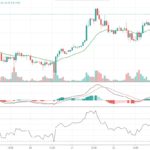Both West Texas Intermediate and Brent crude futures swung between gains and losses after settling the prior week higher as investors kept a close watch on the worst conflict between Russia and the West since the end of the Cold War. Market players, however, doubted that the downing of the Malaysian Air jet over Eastern Ukraine will have major consequences for energy shipments from Russia, the worlds biggest export. Iran failing to meet a July 20 deadline to deaccelerate its nuclear program and strike a deal with six major world powers also kept market participants on the edge. Developments in Libya and the Gaza Strip remained in investors focus as well.
On the New York Mercantile Exchange, WTI crude for delivery in September fell by 0.23% to 101.72 per barrel by 7:24 GMT, having shifted in a daily range between $101.96 and $101.49 per barrel. The contract lost 0.24% on Friday but settled the week 2.3% higher, supported by geopolitical tension.
Meanwhile on the ICE, Brent futures for settlement in the same month declined by 0.28% to $106.94 per barrel. Prices held in a daily range between $107.37 and $106.79 a barrel. The European crude benchmark lost 0.6% on Friday but closed the week 0.5% higher, its first weekly advance in a month.
The downing of Malaysia Airlines flight MH17 once again escalated the tension between Russia and Western major powers, which has been ongoing ever since the civil unrest in Ukraine sparked and marked the worst diplomatic standoff between Russia and the West since the Cold War. However, market participants abstained from building a higher risk premium into the crude benchmarks as they saw the conflict having little chance of disrupting supply deliveries from Russia.
Ric Spooner, chief markets analyst at CMC Markets in Sydney, said for CNBC: “There is a fair way to go before the situation turns into something that poses a more clear danger to disruption on oil and gas supplies from Russia.”
“We know where it came from”
U.S. Secretary of State John Kerry said on Sunday that there was concrete evidence of Russias involvement in the incident. “We picked up the imagery of this launch,” he said, cited by Bloomberg. “We know the trajectory. We know where it came from. We know the timing.”
Facing international pressure to respond to allegations of Russian participation in the attack, President Vladimir Putin remained neutral and appeared unconcerned about the possible expansion of sanctions and growing tension. “The country in whose airspace this happened bears responsibility for it,” he said last week.
According to data by the U.S. Commodity Futures Trading Commission released on July 18th, money managers reduced bullish bets on WTI by 45 107 to 259 259 futures and options combined in the week through July 15th, the lowest since the week ended January 21st.
Iran deal
Also supporting prices, Iran will face renewed pressure to decelerate its nuclear program after the Islamic Republic and six major world powers failed to reach an agreement within the July 20th deadline to end a decade-long dispute regarding its nuclear activities. However, Reuters reported that the Persian Gulf nation has made progress in eliminating its most sensitive stockpile of enriched uranium gas, honoring an interim accord reached late last year.
Market players also eyed developments in Libya and the Gaza Strip to gauge the extent of possible supply disruptions and risk premium that should be priced into the crude benchmarks.
In Libya, holder of Africas biggest crude reserves, unrest in Tripoli continued after government forces regained control over two export terminals from rebels and prepared to resume shipments.
Meanwhile, Israeli tanks shelled militant targets in the Gaza Strip as the clashes entered their bloodiest phase. Militants slayed 13 soldiers, while a dozen of Palestinians were killed. Although Israel and the Gaza Strip dont account for any oil production, investors fear that an escalation of tension in the region might spill the conflict over neighboring major producers and disrupt oil supplies.
Technical view
According to Binary Tribune’s daily analysis, in case West Texas Intermediate September futures breach the first resistance level at $103.85, they will probably continue up to test $104.58. Should the second key resistance be broken, the US benchmark will most likely attempt to advance to $105.21.
If the contract manages to breach the first key support at $102.49, it will probably continue to drop and test $101.86. With this second key support broken, the movement to the downside will probably continue to $101.13.
Meanwhile, September Brent on the ICE will see its first resistance level at $108.26. If breached, it will probably rise and test $109.28. In case the second key resistance is broken, the European crude benchmark will probably attempt to advance to $109.94.
If Brent manages to penetrate the first key support at $106.58, it will likely continue down to test $105.92. With the second support broken, downside movement may extend to $104.90 per barrel.





